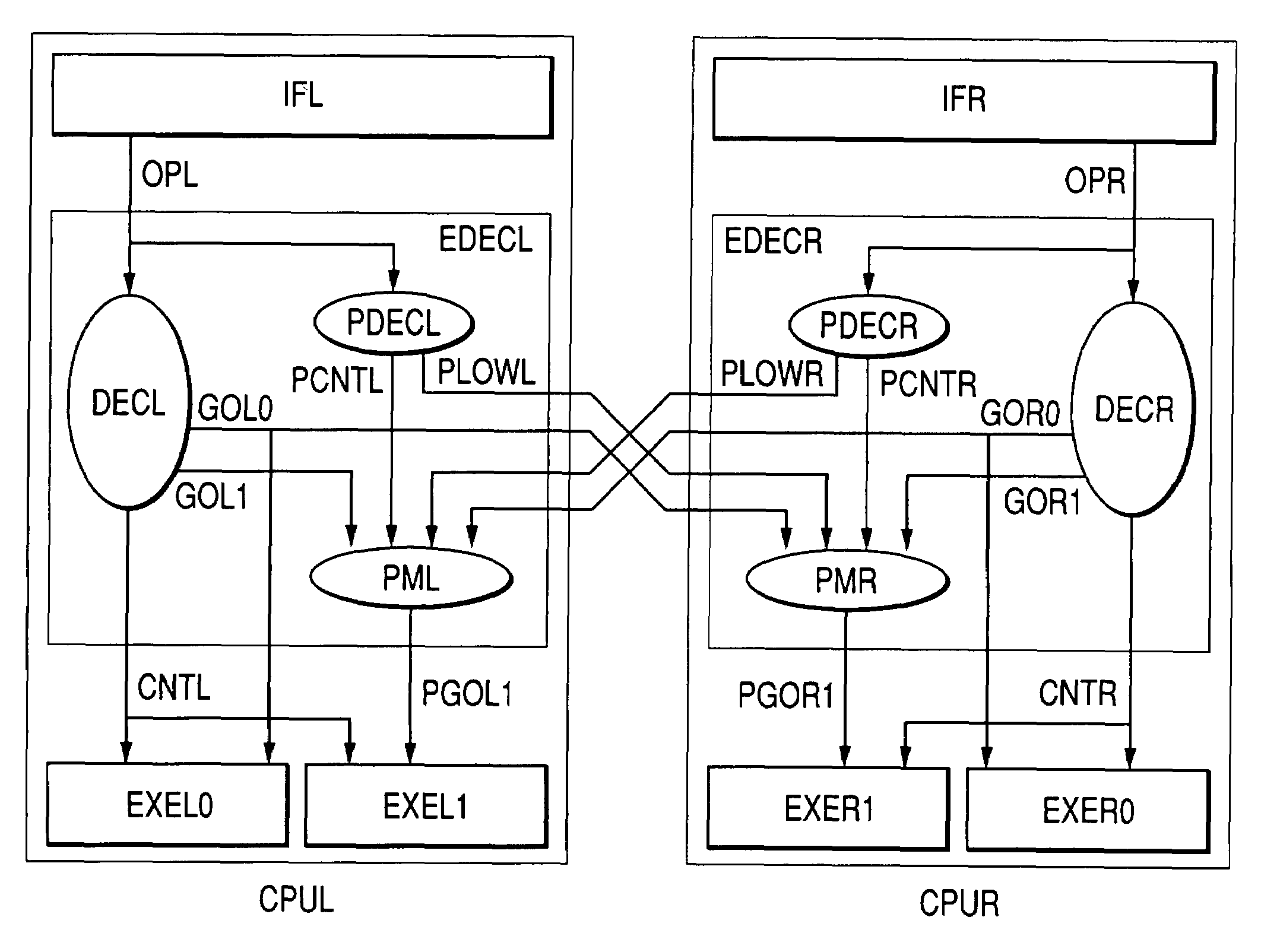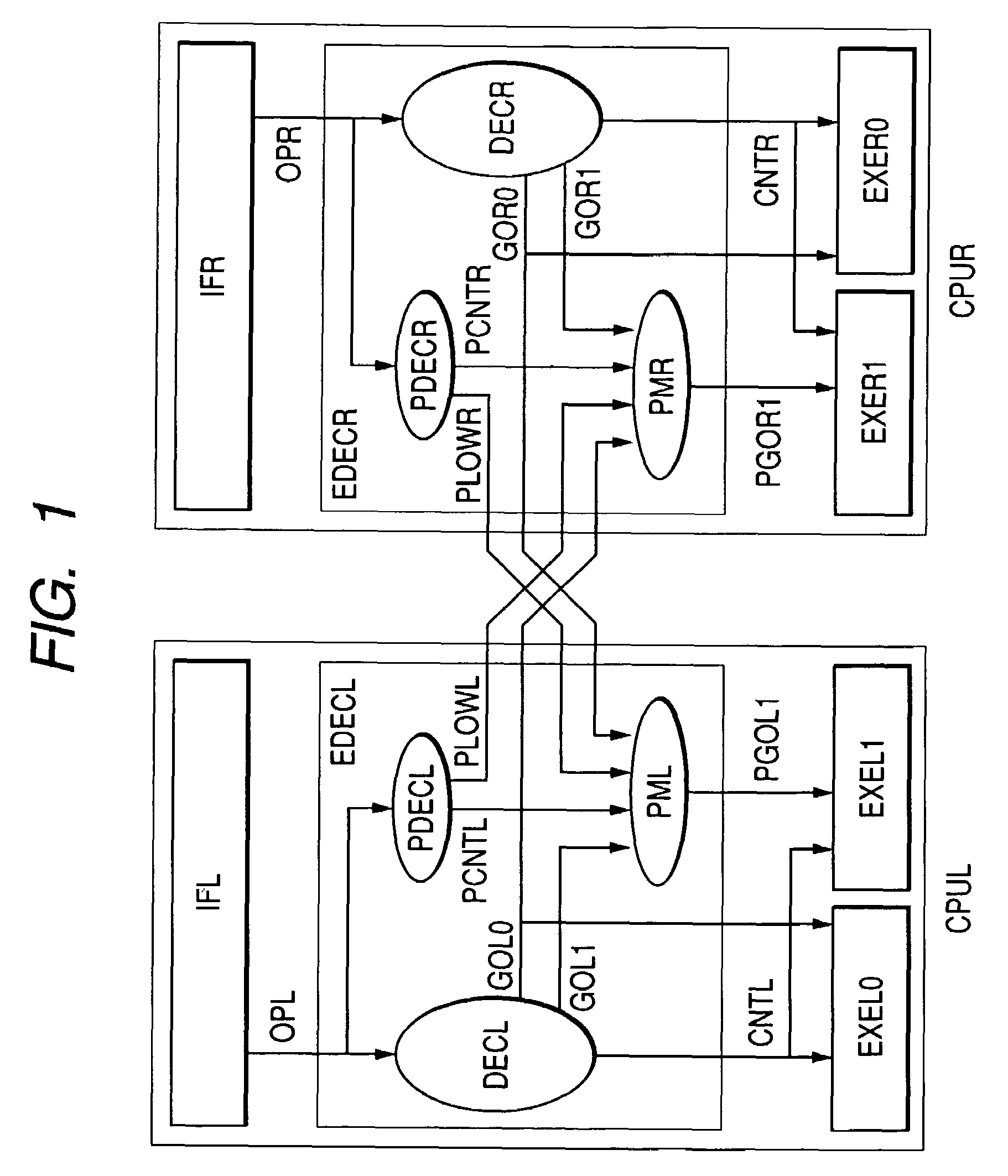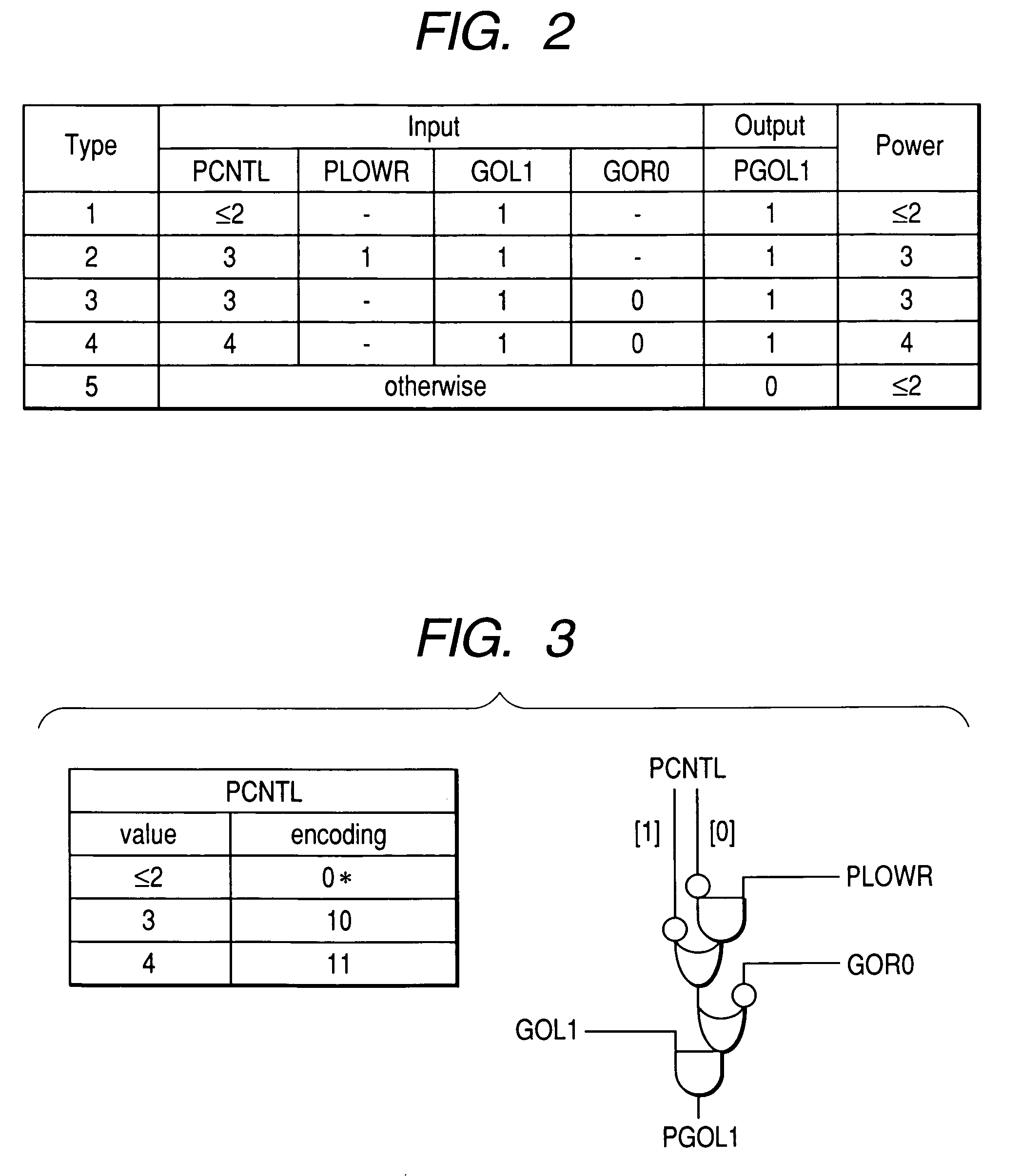Data processing device and semiconductor device
a technology of data processing device and semiconductor device, which is applied in the direction of program control, instruments, sustainable buildings, etc., can solve the problems of chip malfunction, increase in the cost and weight of portable devices, and voltage drop
- Summary
- Abstract
- Description
- Claims
- Application Information
AI Technical Summary
Benefits of technology
Problems solved by technology
Method used
Image
Examples
first embodiment
[0057]A first embodiment of the present invention will be described below with reference to FIGS. 1 to 3. FIG. 1 shows the configuration of a semiconductor device according to the first embodiment of the present invention. FIG. 2 shows a control truth value table for a power control section according to the first embodiment. FIG. 3 shows a control logic for the power control section of the first embodiment.
[0058]In the present embodiment, two processors CPUL and CPUR, each having an equal maximum power consumption, notifies each other of expected power consumption and each processor controls power consumption thereof so that the total sum of power consumptions for each cycle is equal to or less than allowable power. One cycle, as used in the present embodiment, corresponds to one instruction.
[0059]In the present embodiment, allowable power for the two processors equals half of the total sum of the maximum power consumptions and each processor keeps operating on half of the maximum p...
second embodiment
[0078]A second embodiment of the present invention will be described below with reference to FIGS. 4 to 6. FIG. 4 shows the configuration of a semiconductor device according to the second embodiment of the present invention. FIG. 5 shows a control truth value table for a power control section according to the second embodiment. FIG. 6 shows a control logic for the power control section of the second embodiment.
[0079]In the present embodiment, two processors CPUL and CPUR, each having a equal maximum power consumption, notify each other of expected power consumption and each processor controls power consumption thereof so that the total sum of power consumptions during two cycles for the two processors is equal to or less than allowable power. Further, as with the first embodiment, one cycle, as used in the present embodiment, corresponds to one instruction.
[0080]Allowable power for the two processors equals half of the total sum of the maximum power consumptions during two cycles. E...
third embodiment
[0102]A third embodiment of the present invention will be described below with reference to FIGS. 7 to 9. FIG. 7 shows the configuration of a semiconductor device according to the third embodiment of the present invention. FIG. 8 shows a control truth value table for a power control section according to the third embodiment. FIG. 9 shows a control logic for the power control section of the third embodiment.
[0103]In the present embodiment is, as with the first embodiment, two processors CPUL and CPUR, each having an equal maximum power consumption, notifies each other of expected power consumption and each processor controls power consumption thereof so that the total sum of power consumptions during each cycle may be equal to or less than allowable power. In the present embodiment, each processor is a scholar processor that executes instructions one by one. The maximum power consumption at which the processor issues one instruction is 2. The allowable power for the two processors is...
PUM
 Login to View More
Login to View More Abstract
Description
Claims
Application Information
 Login to View More
Login to View More - R&D
- Intellectual Property
- Life Sciences
- Materials
- Tech Scout
- Unparalleled Data Quality
- Higher Quality Content
- 60% Fewer Hallucinations
Browse by: Latest US Patents, China's latest patents, Technical Efficacy Thesaurus, Application Domain, Technology Topic, Popular Technical Reports.
© 2025 PatSnap. All rights reserved.Legal|Privacy policy|Modern Slavery Act Transparency Statement|Sitemap|About US| Contact US: help@patsnap.com



